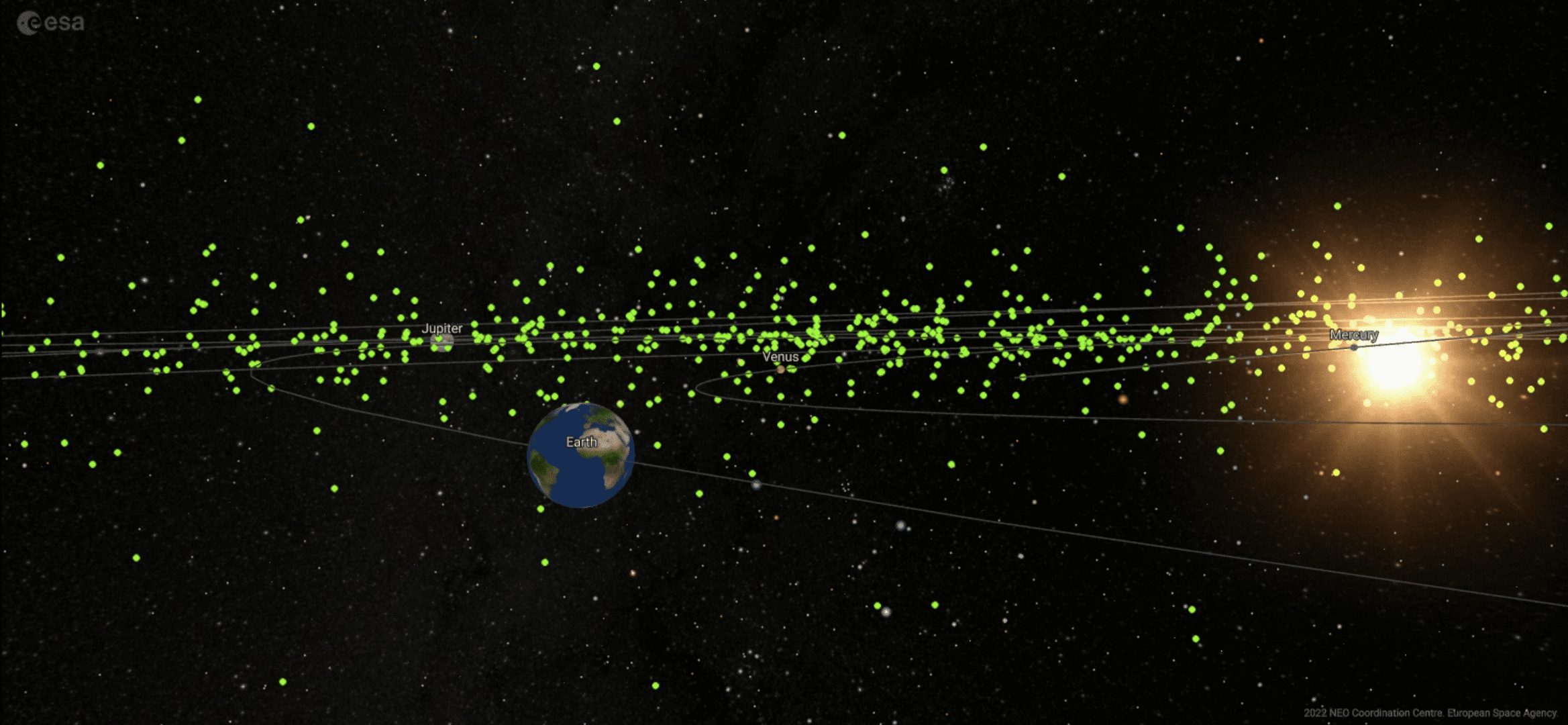Take a look a look through a telescope this week and there’s a chance you might make out a glowing dot edging across the night sky. Could it be a certain Saint prepping for his annual trip across the globe? Or perhaps the celestial omen of a new messiah?
Unfortunately, there’s nothing supernatural going on here, but it will be a sight that will enthrall astronomers.
The ~140-meter-long (460-foot) space rock is approaching Earth and is set to make its closest approach later this week on December 15. People in the Southern hemisphere will get the best view during the close approach, but those in Europe should be able to catch a view until December 19.
The European Space Agency (ESA) has named it the Christmas asteroid, or 2015 RN35, and they want your help to learn a little more about it. Very little else is known about the Christmas asteroid. Astronomers currently only have an estimate of its size; they don’t know what it’s made of, or even fully understand its orbit.

Earth in orbit with asteroids on ESA’s ‘risk list’, using ESA’s asteroid orbit visualization tool. Image credit: ESA
The Christmas asteroid poses no risk to Earth because of its small size and its distance from our planet, about 686,000 kilometers (426,261 miles) – just under two lunar distances. While this means the asteroid is fairly hard to see, ESA says a telescope that’s 30 centimeters (11.8 inches) or larger should have a decent shot at observing it.
If you manage to spot it, you can share your observations on Twitter, Facebook, Instagram, or Reddit with the hashtag #ESAChristmasAsteroid.
Amateur astronomers can use ESA’s new asteroid toolkit to help find the asteroid. The freely available tool was released this month for both professional and amateur astronomers, as well as the media and schools looking to inform people about asteroids.
“We use these tools every day to plan our observations, to visualise asteroid close approaches and to help us understand and explain the varied asteroid populations in the Solar System and the risk we face,” Juan-Luis Cano, Information System Manager at the Near-Earth Object Coordination Centre, said in a statement.
“We want them to be as useful to the rest of the world as they are to us, because Planetary Defence is a global effort,” Cano added.
Don’t fret if you miss this one. If you can manage to get off the couch, you’ll be able to catch sight of another asteroid, 2010 XC15, on December 27 that’s set to have similar visibility.
Source Link: Is That You, Santa? Christmas Asteroid Will Cruise The Skies This Month